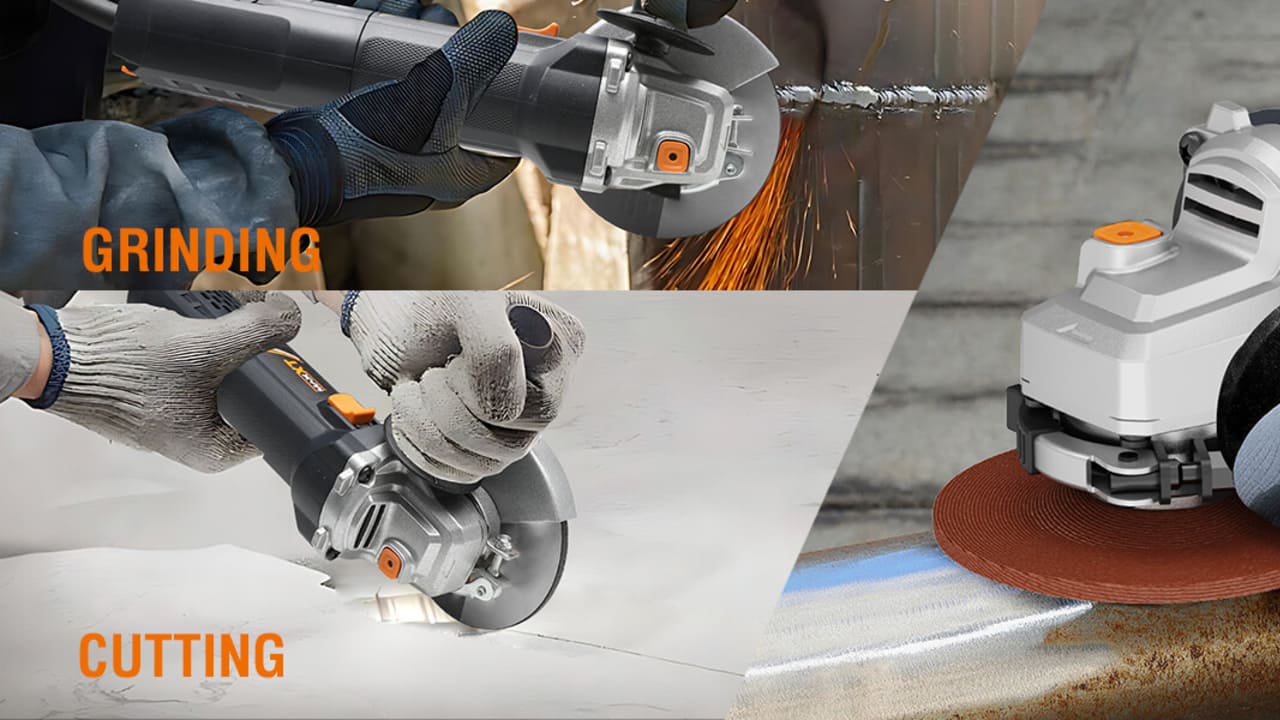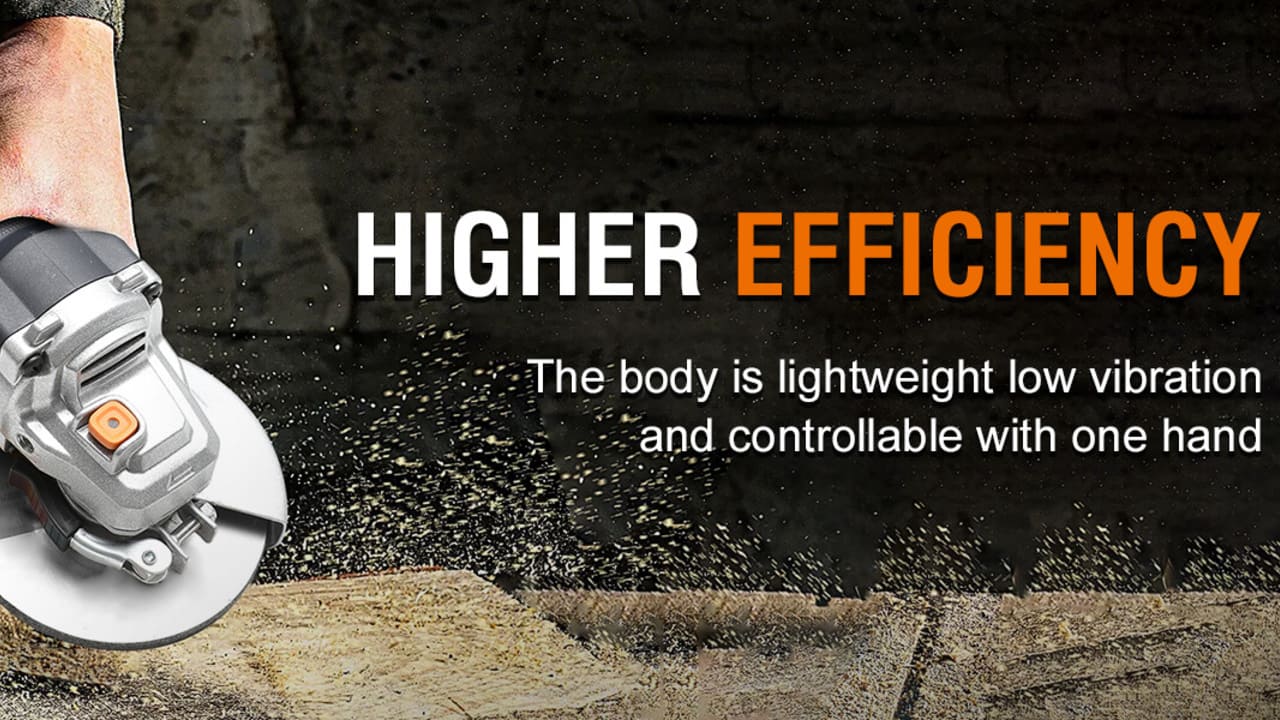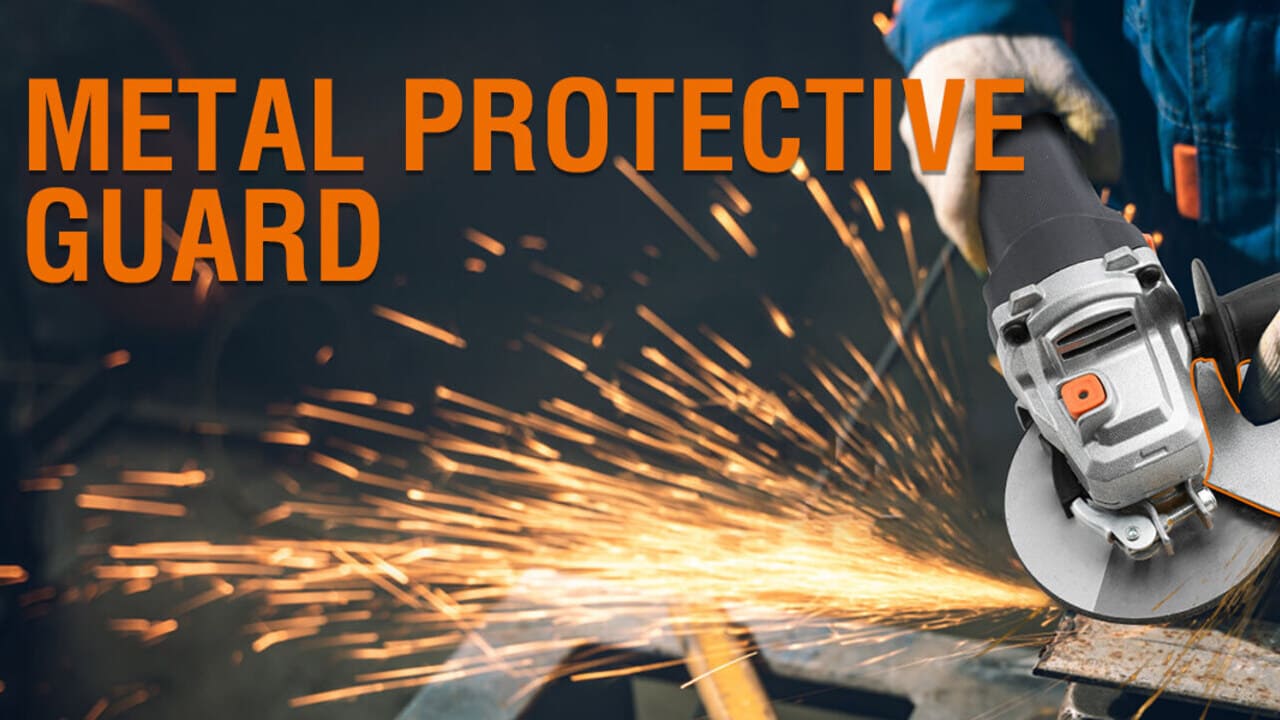Angle grinders are powerful tools for cutting, grinding, and polishing. But should you go corded or cordless? The choice isn’t easy. Corded models offer constant power, while cordless ones provide mobility. Both have strengths and weaknesses. Your decision depends on your needs. Do you prioritize power or portability? Do you work in a fixed space or move around?
In this guide, we’ll break down the key differences. We’ll cover performance, convenience, safety, and ideal uses. By the end, you’ll know exactly which angle grinder is right for you. Let’s dive in and find the perfect fit!

Key Differences Between Corded and Cordless Angle Grinders
Choosing between corded and cordless angle grinders depends on your work needs. Each type has strengths and weaknesses. Let’s break down the key differences.
Power Source and Performance
Corded grinders run on continuous AC power, delivering uninterrupted performance. They operate at higher amperages (A), typically between 7A and 15A. More amperage means stronger cutting and grinding force. These grinders maintain peak efficiency without fluctuations.
Cordless grinders are battery-powered angle grinders. They rely on lithium-ion batteries, commonly rated between 18V and 60V. Higher voltage improves power output but increases weight. Battery life varies based on workload. Intense grinding drains batteries faster, affecting performance consistency.
Portability and Convenience
A cordless angle grinder with a battery gives you the benefit of the portability needed for off-site tasks. The portability of cordless grinders makes them an unmatchable tool in areas without power. However caution is essential because battery capacity has its limits. If you want uninterrupted long work, you need several battery packs.
A corded grinder comes with unlimited runtime but it does not offer mobility. The powerful cord limits your movement as it requires extension leads. Corded grinders function best in workshops since mobility takes a backseat to electricity output. Advanced-level professionals go for corded grinders for their operations.
Speed and Torque
Corded grinders typically operate at 8,000 to 12,000 RPM. They can maintain their torque strength when facing challenging loads. Application requirements in industries need this precise rate of performance for heavy-duty grinding operations.
The variable speed function on cordless grinders exists, but the torque delivery reduces over time. Only the remaining battery power leads to decreasing torque output from the grinder. The efficiency of advanced brushless motors outperforms cordless models in building productivity; however, these motors cannot match the performance of corded tools.
Pros and Cons of Corded Angle Grinders
Corded angle grinders excel in power, but do they fit your needs? Weigh these pros and cons.
Advantages of Corded Angle Grinders
- Consistent Power Supply for Heavy-Duty Jobs: Corded angle grinders draw power directly from an electrical outlet. They maintain a steady power level without fluctuations, making them ideal for continuous use in grinding, cutting, and polishing tough materials.
- Higher RPM and Torque for Tough Materials: Most corded models offer higher RPM (10,000+), allowing them to cut through dense metals, stone, and concrete with ease. Their motors deliver strong torque, reducing strain when working on hard surfaces.
- No Need to Worry About Battery Life: Unlike cordless grinders, corded ones never run out of power. This ensures uninterrupted workflow, especially in demanding industrial and construction settings where downtime can be costly.
- More Affordable Than Cordless Models: Corded angle grinders typically cost less than battery-operated versions. They also eliminate the need for expensive battery replacements, making them cost-effective in the long run.
Disadvantages of Corded Angle Grinders
- Requires a Nearby Power Source: You need access to an outlet or extension cord. This limits their use in outdoor, remote, or off-grid locations.
- The Cord Can Be Restrictive and Pose Safety Hazards: Cords can tangle, creating tripping hazards. They also restrict movement, making work in tight spaces more challenging.
- Less Convenient for Remote Work: Without portable power, they are impractical for fieldwork, pipeline maintenance, or construction sites without electricity access.
Pros and Cons of Cordless Angle Grinders
Cordless angle grinders offer freedom, but do they have drawbacks? Let’s look at their pros and cons.
Advantages of Cordless Angle Grinders
- Greater mobility and flexibility: The cordless grinder with battery operates any place where it requires no power access. Such grinders work efficiently in distant areas and open spaces.
- Safer work environment: The cordless design reduces the number of hazards that arise from tangled wires and ensures safety. High-traffic workplaces and elevated positions require such a grinder because of its essential safety benefit.
- Better maneuverability: Cordless grinders allow detailed work in restricted spaces. Tasks like automotive fixes and overhead grinding operations become more accessible to you.
- Advanced battery technology: Lithium-ion batteries offer longer runtime. Brushless motors improve both power efficiency and durability.
- Faster setup and workflow: No cords eliminate setup time. The absence of cords helps boost productivity during time-sensitive work.

Disadvantages of Cordless Angle Grinders
- Limited battery life: Long tasks require multiple batteries. This increases downtime and costs.
- Lower torque and speed: Batteries deliver less power output than the corded models. Cordless angle grinder requires more time to perform heavy-duty cutting and grinding operations.
- Higher long-term costs: Batteries degrade over time. The replacement cost contributes to an increase in the total investment value.
- Increased tool weight: Batteries make cordless angle grinders heavier. You will experience faster exhaustion due to the weight of the tool.
- Performance fluctuations: The power strength reduces when the battery empties. This affects the performance highly in demanding jobs.
Best Use Cases: When to Choose Corded or Cordless
Corded and cordless angle grinders work best for different tasks. Knowing when to use each ensures better results. Here are the different usages when each of these grinders works perfectly.
When to Choose a Corded Angle Grinder
High-power continuous tasks require the use of corded angle grinders. The devices serve industries perfectly because they excel at metal fabrication as well as masonry tasks. The power supply for these grinders remains constant so users can perform extended grinding operations. Workshops, together with garages, choose these tools because of their dependable nature. These tools excel at cutting thick objects such as metal, concrete, and stone.
Automotive facilities primarily use corded angle grinders to perform heavy grinding operations followed by polishing tasks. Corded angle grinders provide functionality for rust elimination, bolting cutting, and metal part modification. A powerful corded grinder is a must for serious metalworking tasks
When to Choose a Cordless Angle Grinder
Cordless angle grinders are best for remote work or job sites without power. They allow mobility, making them great for outdoor or high-altitude tasks. Professionals prefer them for quick or occasional cutting and grinding jobs. They are useful for maintenance crews, plumbers, and electricians.
These grinders are ideal as a backup tool for fieldwork. They save time when power cords are inconvenient or hazardous. Cordless models are perfect for cutting rebar, pipes, and tiles on-site. With modern battery improvements, they now offer power close to corded models. Always choose a high-Ah battery for extended runtime in demanding jobs.
Buying Guide: Factors to Consider
The right-angle grinder depends on your work requirements and preferences. Corded models provide unlimited runtime, while cordless ones offer freedom of movement. Here’s what to consider before making a choice.
Battery and Motor Efficiency (For Cordless Models)
The amount of power stored in a battery as Ah determines its operational time. The combination of elevated Ah ratings results in increased runtime duration; however, it increases the total weight of the device.
Lithium-ion batteries provide better performance than their predecessor Ni-Cd batteries. The operating time of brushed motors remains shorter than that of brushless motors, as they consume less power and maintain a longer operational duration.
These compounds lessen resistance and temperature along with energy waste, which extends battery operation time. Brushed motors maintain lower prices yet require frequent maintenance requirements. Brushless models attract professionals since they offer high operational efficiency along with solid construction.
Power and RPM (For Corded Models)
The steady power output of corded models makes them appropriate for intensive industrial tasks. Grinders with 7-amp power are suitable for everyday tasks, yet professional users need the boosted capacity of 15-amp devices.
The strength of motor power enables users to cut through metal and concrete materials effectively. The speed at which a device rotates per minute influences both cutting and grinding accuracy. When RPM settings elevate the cutter produces smoother results but might decrease operator control capability.
Absolute precision during demanding operations can be accomplished by using slower RPM settings.
Disc Size and Compatibility
Disc is the heart of this tool. It normally spins at 8,000 to 11,000 RPM. Disc size affects cutting depth and grinding area. A 4.5-inch disc is good for general use and detailed work. A 7-inch disc handles deeper cuts and heavy grinding.
Professionals often use 9-inch discs for industrial applications. Always check if the grinder supports different disc sizes. Using the wrong size can reduce efficiency and cause safety risks.
Safety Features and Ergonomics
Kickback protection prevents sudden tool movement, reducing injury risks. A soft start feature helps control the grinder’s power surge. Adjustable handles improve grip and reduce hand strain during long use.
Vibration control lowers fatigue, making work more comfortable. Always wear safety gear like gloves and eye protection for extra protection.

Wholesale Angle Grinders – Power & Savings in One!
MaxXT has led the industry in advanced wallwork solutions since 2006. We provide premium handheld tools, including high-performance wholesale angle grinders for retailers and distributors worldwide.
Professionals trust our grinders for industrial, automotive, and construction grinding tasks. MaxXT Wholesale supports dealers with reliable tools for every job requirement. Join us today and be a dealer of MaxXT to offer your customers the best grinding solutions available
Conclusion: Which One is Right for You?
There’s no one-size-fits-all angle grinder—each has its strengths. Corded models provide continuous power, while cordless ones offer mobility. If you’re looking for the best cordless angle grinder, consider your work environment, project demands, and power needs before choosing.
Similarly, the best-corded angle grinder ensures uninterrupted performance for heavy-duty tasks. A well-chosen grinder improves efficiency, precision, and overall performance. Making the right decision ensures smoother work and better results.
FAQs
Which is better for a beginner: corded or cordless?
Cordless grinders are easier to handle due to their mobility. However, corded models offer consistent power, making them better for long tasks. Beginners should choose based on convenience, power needs, and project type. A lighter cordless model is ideal for learning.
How long does a cordless grinder battery last?
Battery life depends on Ah rating, motor efficiency, and workload. Most grinders run for 30 to 60 minutes on a full charge. High-capacity batteries last longer but add weight. Frequent heavy grinding drains the battery faster than light-cutting tasks.
Can a cordless grinder cut metal as effectively as a corded one?
Yes, but performance depends on motor power and battery strength. High-end cordless models match corded grinders in cutting metal. However, prolonged heavy use may drain the battery quickly. Corded grinders are better for extended, power-intensive metal-cutting tasks.
Are corded grinders more powerful than cordless?
Generally, yes, because corded models have a continuous power supply. Cordless grinders rely on battery output, which can decrease over time. Advanced battery technology has improved cordless power, but corded grinders still offer more consistent high performance for demanding tasks.
